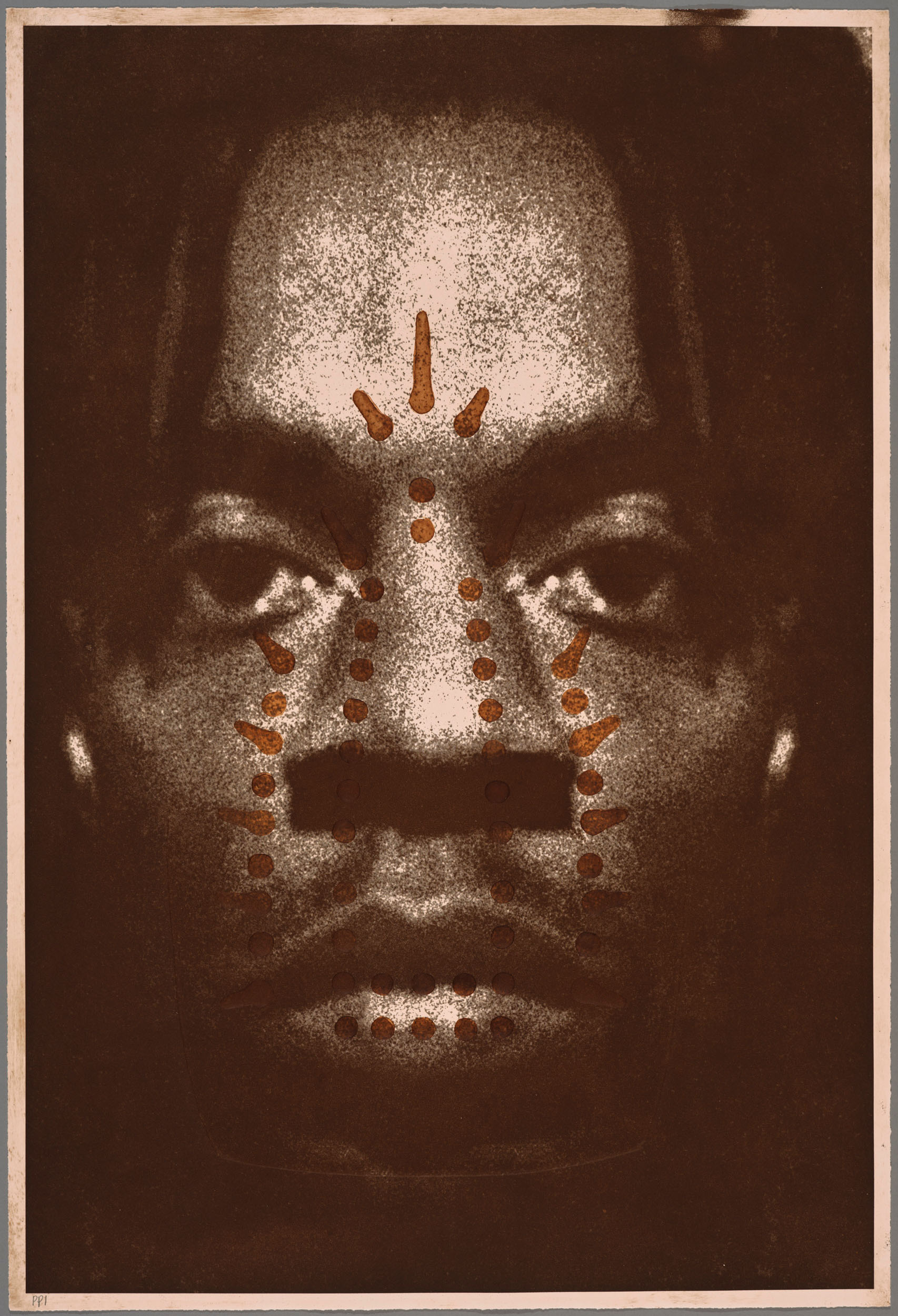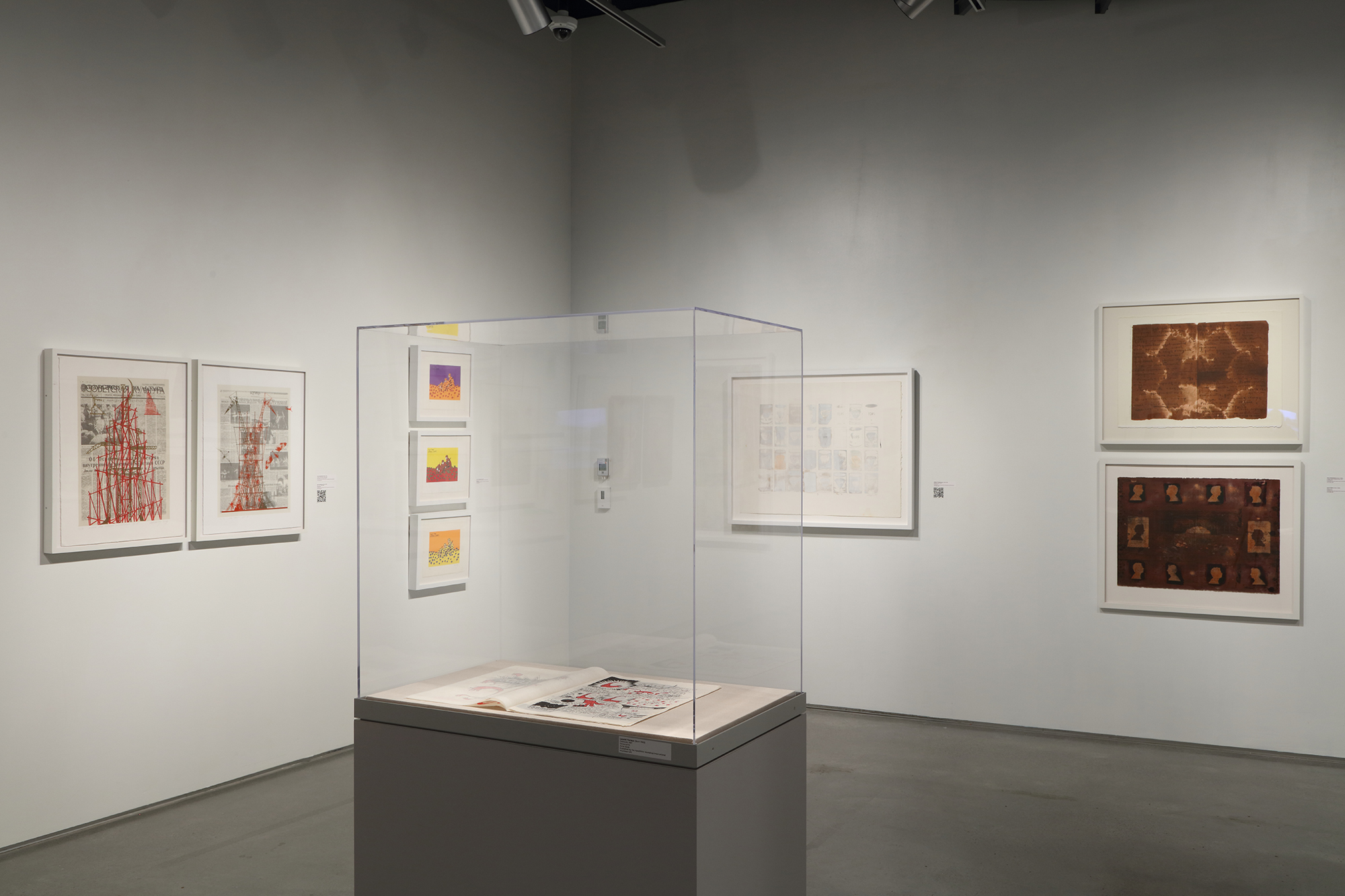Upcoming Exhibitions for Spring 2026
The Art of Paper: Selections of Handmade Paper Works from the Collections of Jordan D. Schnitzer and His Family Foundation
January 20 - May 1, 2026
Don Russell Clayton Gallery
Malinda Jolley Mortin Gallery
Curated by Brett Littman, and Co-curators Susan Gosin and Cynthia Nourse Thompson

Image credit: Willie Cole, Man Spirit Mask, 1999. Photo-etching, embossing and hand coloring.
Collection of the Jordan Schnitzer Family Foundation © Willie Cole. Photography by Aaron Wessling.
The Art of Paper: Selections of Handmade Paper Works from the Collections of Jordan D. Schnitzer and His Family Foundation, features approximately 65 works that chronicle the pioneering achievements within the discipline of hand papermaking. This selection of works reveals how the field of handmade paper art was a natural advancement of and response to the historic relationship between print and paper. As an example of how innovations in printmaking occurred in tandem with developments in hand papermaking, the exhibition features early prints on handmade paper by artists such as Jasper Johns alongside examples of handmade paper art by artists like Mark Bradford and Glenn Ligon. The exhibition also focuses on the critical role of collaboration between artists and master papermakers in professional studios. Significant collaborations from participating publishers such as Tyler Graphics, Pace Editions, Mixografia, The Brodsky Center, and Island Press are represented alongside seminal works produced at Dieu Donné. Widely acknowledged as a pioneer in the field, Dieu Donné remains instrumental in creating new handmade paper art with leading contemporary artists. The exhibition debuts at the Bernard A. Zuckerman Museum of Art, which simultaneously marks the 50th Anniversary of Dieu Donné.
-
About the Jordan Schnitzer Family Foundation
At age 14, Jordan D. Schnitzer bought his first work of art from his mother’s Portland, Oregon contemporary art gallery, evolving into a lifelong avocation as collector. He began collecting contemporary prints and multiples in earnest in 1988. Today, the collection exceeds 190,000 works and includes many of today’s most important contemporary artists. It has grown to be one of the country’s largest private print collections. He generously lends work from his collection to qualified institutions. The Foundation has organized over 110 exhibitions and has had art exhibited at over 150 museums. Mr. Schnitzer is also President of Harsch Investment Properties, a privately owned real estate investment company based in Portland, Oregon, owning and managing office, multi-tenant industrial, multi-family and retail properties in six western states. For more information about the Jordan Schnitzer Family Foundation, please visit jordanschnitzer.org.









